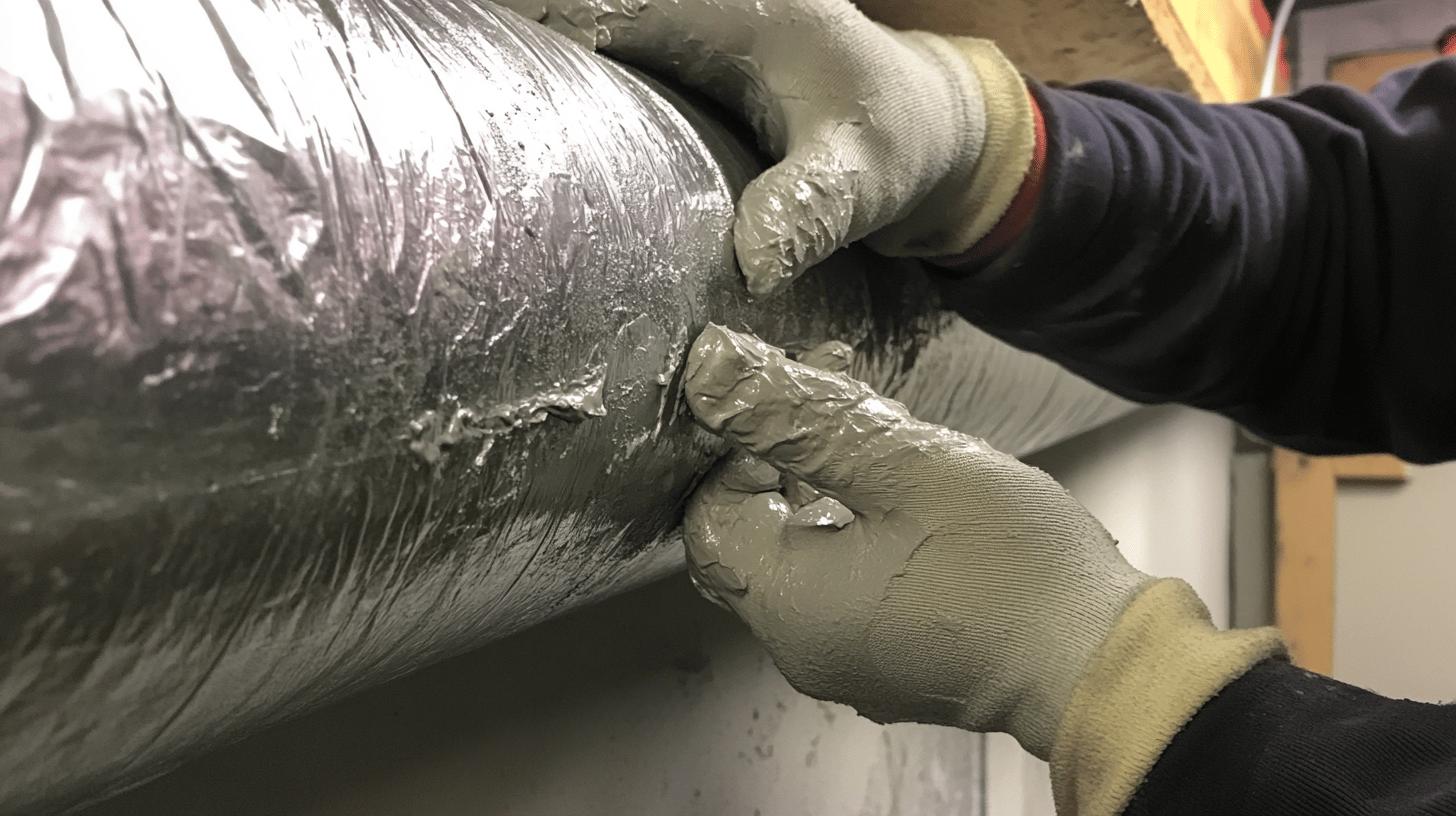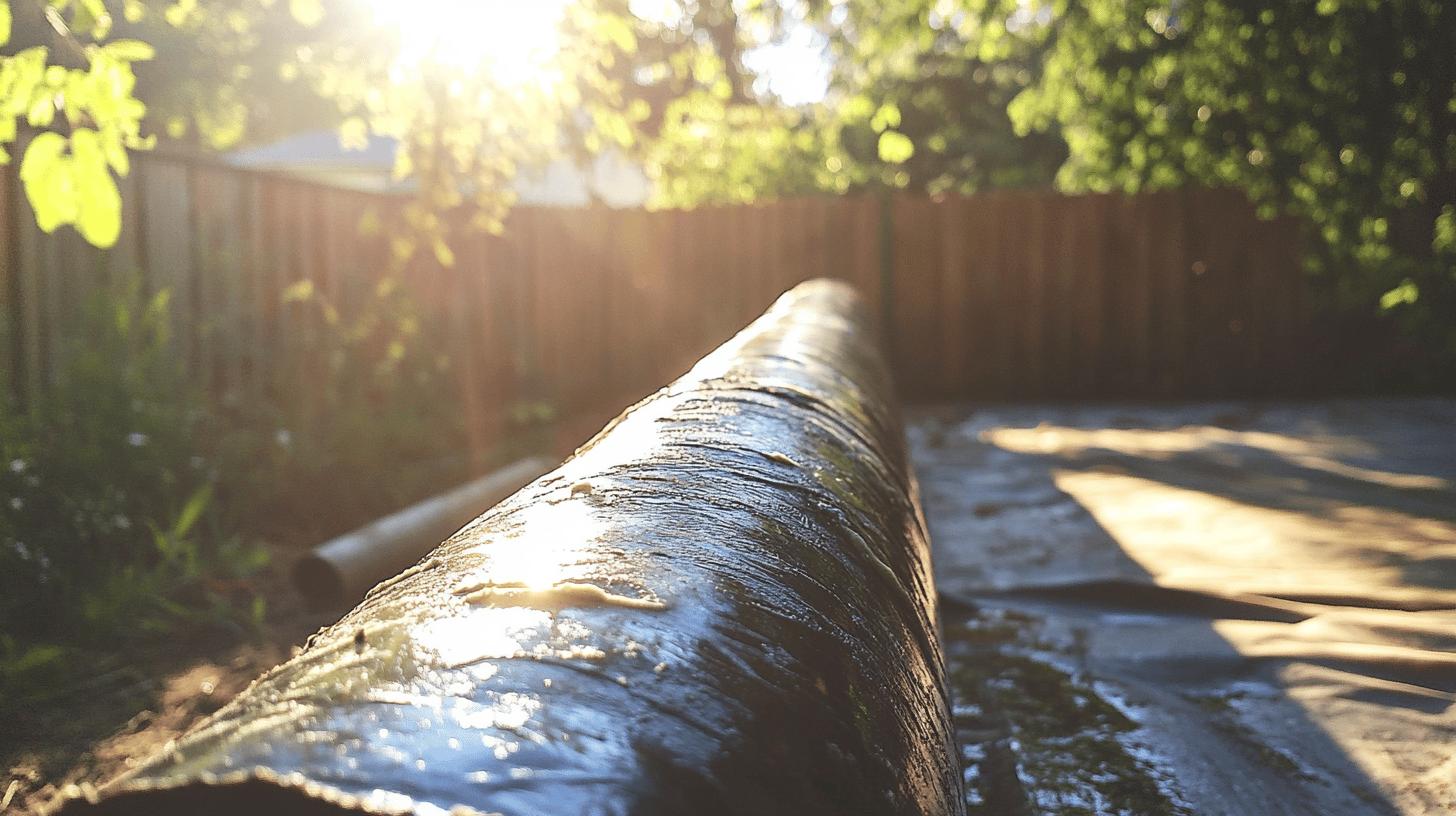TL;DR:
- What: Duct sealing putty seals ductwork joints and seams, preventing air leakage and enhancing HVAC efficiency.
- Benefits: Reduces energy costs, improves indoor air quality, and is easy to apply without special tools.
- Preparation: Clean the surface thoroughly before application; smooth and inspect the seal afterward.
- Durability: Choose based on flexibility, temperature tolerance, and brand reputation; available brands range in durability and temperature tolerance (-20°F to 200°F).
- Outdoor Use: Not officially approved for outdoor use due to sunlight exposure; alternatives include silicone sealant and butyl tape.
- Cost: Typically $5 to $20 per pound at retailers; buying in bulk may save money.
Is your HVAC system not running as efficiently as it should? You might be missing out on a simple solution: duct sealing putty. This flexible material is changing the game for homeowners and professionals, improving energy efficiency in HVAC systems. Easy to apply with no special tools required, duct sealing putty fills gaps and seals joints like a pro. Keep reading to discover how this often-overlooked product can help maintain even temperatures, lower energy bills, and boost your home’s comfort—without the hassle.
Understanding Duct Sealing Putty: A Comprehensive Overview
Duct sealing putty is a flexible material designed to seal joints and seams in ductwork. It prevents air leakage, helping maintain energy efficiency and consistent temperatures in HVAC systems. Its non-hardening nature allows it to stay flexible, adjusting to the natural movements of the ductwork. This makes it a popular option for both homes and businesses.
In HVAC systems, duct sealing putty boosts energy efficiency by minimizing air loss through sealed ducts, ensuring your heating and cooling systems work efficiently and lowering utility bills. It also improves indoor air quality by blocking dust and allergens. Plus, it works well with a variety of duct materials, making it a versatile choice for a wide range of HVAC applications.
- Sealing HVAC ductwork joints and seams
- Preventing drafts and air leakage in homes
- Insulating electrical boxes
- Reducing noise in duct systems
- Boosting energy efficiency in commercial buildings
One of the best things about duct sealing putty is how easy it is to apply. You don’t need any special tools, making it perfect for both professionals and DIYers. Simply mold the putty to the shape you need and apply it directly to the area that needs sealing. This makes it an efficient and reliable solution for keeping your HVAC system running smoothly.
How to Use Duct Sealing Putty Effectively

Before applying duct sealing putty, it’s important to prepare the surface properly. Why is this step so crucial? It ensures the putty sticks well and creates a strong seal. Cleaning the area helps remove dust, dirt, or grease that could prevent the putty from adhering properly, which could lead to leaks. Make sure the surface is clean and dry for the best bond, ensuring the putty seals gaps effectively.
- Clean the Surface: Use a cloth to remove dust and debris. For greasy areas, use a mild detergent.
- Apply the Putty: Shape the putty to fit the gap, pressing it firmly in place.
- Smooth the Putty: Smooth the putty with your fingers or a putty knife to ensure a tight seal.
- Inspect the Seal: Check for missed spots or uneven areas. Add more if needed.
Common tools, like a putty knife, are helpful for smoothing out the putty and removing any excess during application. Gloves can also be used to keep your hands clean and to apply the putty in hard-to-reach spots, ensuring full coverage.
For lasting results, it’s important to apply the putty correctly and maintain the sealed areas. Regular inspections and reapplications might be necessary, especially in places with movement or fluctuating temperatures. You can find plenty of online resources, such as videos and guides, to help perfect your application technique.
Choosing the Best Duct Sealing Putty for Your Needs
When choosing duct sealing putty, it’s important to consider the type of application and environmental conditions. Why? Because these factors ensure the putty performs effectively in your specific situation. For HVAC systems, you might need putty that can handle higher temperatures, while other applications, like electrical, may require more flexibility. Understanding your project’s needs helps you select the right putty, cutting down on the need for frequent reapplications.
Brand reputation and reviews play a big role in your decision. How? They provide insight into real-world performance. A well-known brand typically signals reliability and quality, while customer reviews highlight the pros and cons, helping you make a smarter choice when selecting duct sealing putty.
| Brand | Flexibility | Temperature Tolerance | Durability |
|———|————-|———————–|—————-|
| Brand A | High | -20°F to 180°F | Long-lasting |
| Brand B | Medium | 0°F to 150°F | Moderate |
| Brand C | Low | 30°F to 120°F | Short-term |
| Brand D | High | -40°F to 200°F | Long-lasting |
Comparing features helps you choose the right duct sealing putty for your needs. Flexibility is important for areas that move or vibrate, while temperature tolerance ensures it stays effective in different conditions. Durability plays a big role too—it affects how often you’ll need to reapply, which impacts your maintenance costs.
Duct Sealing Putty in Outdoor and Extreme Conditions

Duct sealing putty is commonly used outdoors for sealing around hose spigots, PVC conduits, and gas lines, but there are challenges. Prolonged exposure to sunlight can dry out the putty, weakening its seal. Since it’s not officially approved for outdoor use, extreme weather conditions can compromise its effectiveness. This makes it important to consider alternatives or reapply the putty regularly in outdoor applications.
To overcome these limitations, consider alternatives designed for outdoor use:
- Silicone sealant
- Butyl tape
- Waterproof epoxy
- Polyurethane foam
Choosing the right duct sealing product is crucial for long-lasting, reliable seals. Products with water resistance and flexibility provide better protection against environmental damage, ensuring your installations remain intact even in challenging conditions.
Evaluating the Cost and Availability of Duct Sealing Putty
Duct sealing putty is easy to find at hardware stores, home improvement centers, and online. It’s usually sold in one-pound blocks, which are great for small to medium projects. You can often find it in the electrical aisle.
Prices vary depending on the brand, quantity, and special features. Basic putty is generally affordable, but options with added features like fire resistance may cost more. The price is mainly determined by the brand and the specific features it offers.
- Home Depot: $5 to $15 per pound
- Lowe’s: Around $6 to $16 per pound
- Online Retailers: $5 to $20 per pound, depending on shipping
To save money, consider buying in bulk for bigger projects. Keep an eye out for discounts or sales, especially online, where you can find bundle deals that offer great value. Comparing prices across different sellers helps you get the most out of your investment in duct sealing putty.
Final Words
By exploring the benefits and uses of duct sealing putty, you’ve learned how it boosts HVAC efficiency and works well in different applications. Easy to apply and suitable for both DIYers and professionals, duct sealing putty is essential for keeping temperatures consistent in duct systems. When choosing the right putty, compare brands and consider environmental factors, especially for outdoor use. Available at stores like Home Depot and Lowe’s, knowing the cost and availability helps you make a smart investment. With this knowledge, you’re ready to keep your ductwork energy-efficient and secure in any situation.
FAQ
What is duct sealant putty used for?
Duct sealing putty is used to seal joints and seams in ductwork to improve HVAC system efficiency and maintain consistent temperatures. It also seals around electrical conduits and other small openings.
What is the difference between duct seal and plumbers putty?
The key difference is their application. Duct seal putty is used for HVAC systems to stop air leaks, while plumbers putty is used in plumbing to create watertight seals around pipe joints and fixtures.
How long does duct seal putty last?
Duct seal putty is known for long-lasting durability. When applied correctly, it can effectively seal for several years without requiring frequent reapplication.
Is duct seal putty waterproof?
Duct seal putty offers water-resistant properties, making it suitable for areas prone to moisture, though manufacturer specifications may limit its use for prolonged outdoor exposure.
What is the best sealant for ductwork?
The best sealant for ductwork depends on application needs. Popular choices include mastic sealant for flexible application and foil tape for ease of use. Product reviews can guide selection based on durability and temperature tolerance.
Can duct seal putty be used outdoors?
Duct seal putty is commonly used for exterior applications like sealing around conduits, but it may dry out in direct sunlight. Manufacturer guidelines typically do not approve its use for long-term outdoor conditions.

